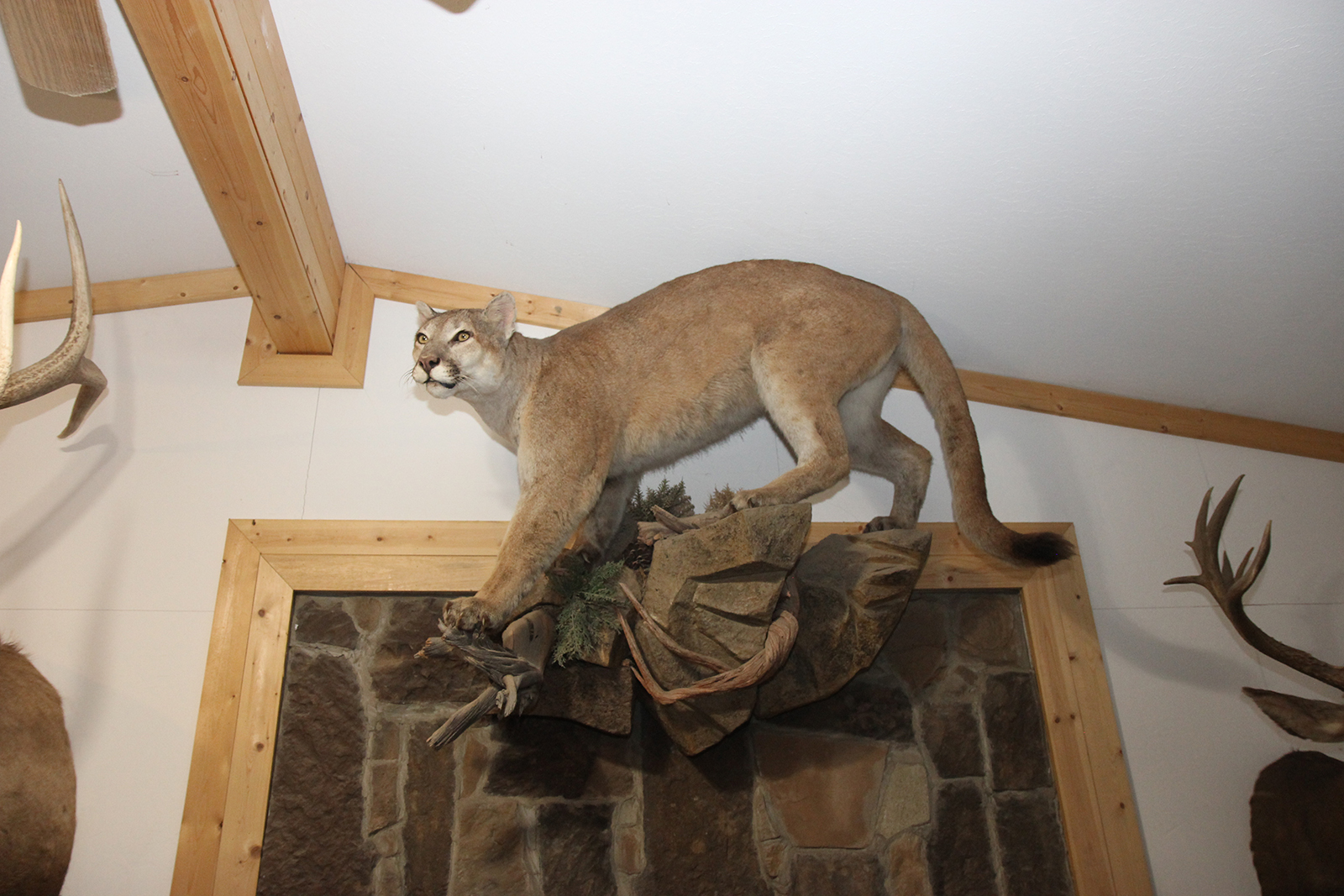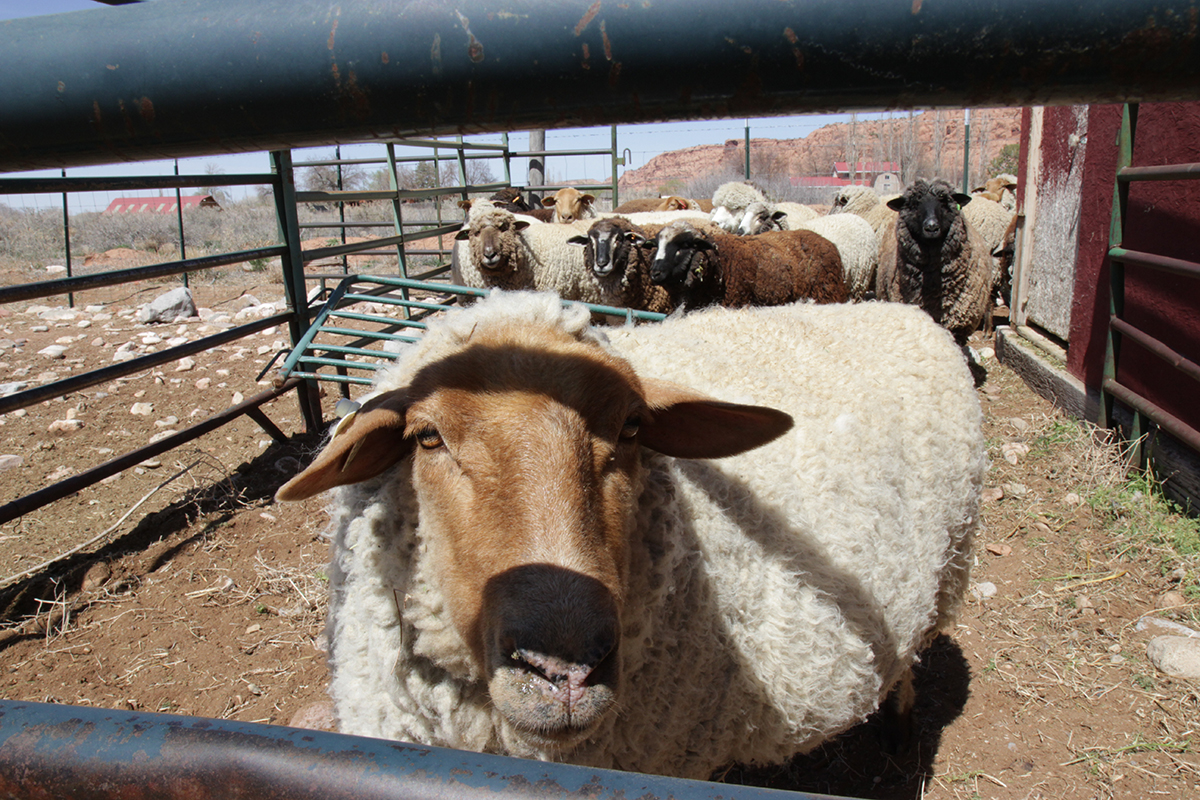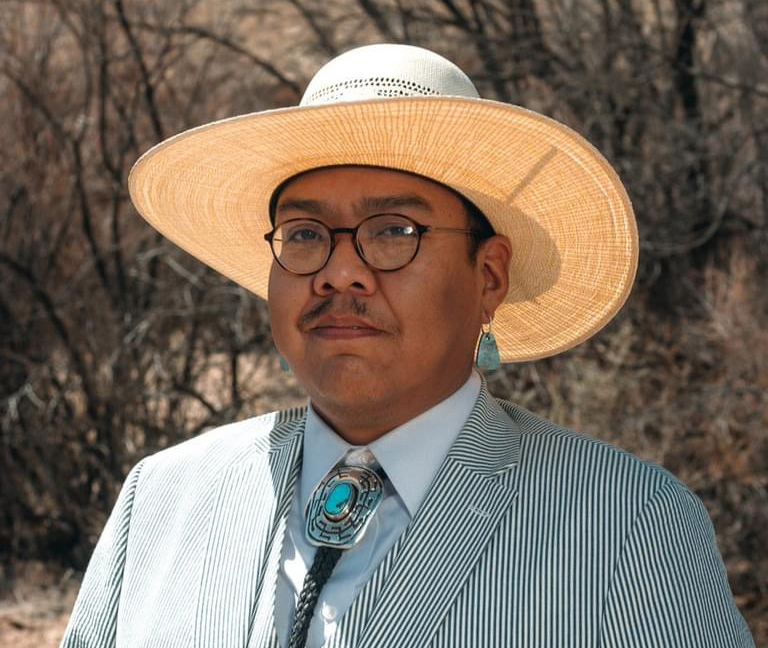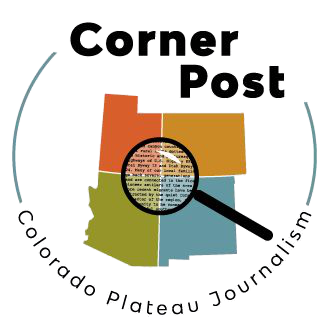
In-Depth
A Good Sheep Shearer is Hard to Find


by Emily Arntsen – 6.16.2022 – 15 min. read
Dallan Evans took a final stroke with his shearing clippers across the ram’s back, and a creamy fleece fell to the ground like a scrap of cloud. Finished with the first animal of the day, he turned off the clippers, brushed a pearl of sweat off his chin, and waited for a farmhand to bring the next ram. It was only 9 a.m., but it was already hot at Cunnington Farms in Moab, a sign that spring shearing season had begun in the Southwest.
A small crowd had gathered near Evans to watch him shear. “We really need a shearer down in Arizona. What are your rates?” asked one of the onlookers, Sonya Pyne, who raises a small flock of sheep at her farm in Queen Creek, Arizona. She had traveled to Moab for the shearing to buy fleeces from her long-time friend and owner of the farm, Sam Cunningham.
“Six dollars for ewes, nine dollars for rams,” said Evans, as he caught his breath.
“We gotta get you down to Arizona,” said Pyne.
Evans nodded but said nothing. The twenty hour round-trip drive to the Phoenix area from his home in Payson, Utah, probably wasn’t worth the few hundred dollars he could make by shearing the small flock.
Sheep shearers are in short supply in the Southwest, especially in the past two years as pandemic-related travel restrictions have stopped the flow of migrant sheep shearers from Mexico and Peru. But even before the pandemic started, wool growers have been complaining for years that a good sheep shearer is hard to find. Most chalk this up to the job’s grueling physical demands and relatively low pay.
One Moab resident who came to Cunnington Farms on shearing day to help clean the fleeces said that last year, when she decided to start her own flock, she specifically chose a breed of sheep she could shear without the help of a professional. “I knew how hard it is to find a shearer, so I got Shetlands. You can get the wool off a Shetland with just your bare hands,” she said as she mimed the process of slowly pulling wool off a sheep, a technique called rooing.
“A lot of people my age don’t want to do this kind of physical labor,” said Evans, who is 29 and has been shearing for six years. “Most people my age want to sit behind a desk all day, and the people who don’t mind doing this kind of work are in their 50s and 60s. Their backs are going out. They’re getting too old.”
The people who take up this line of work, he said, are typically seeking out the challenge intentionally.

“I started shearing because they say it’s the hardest job you can do,” said Nicole Tomlin, who was shearing alongside Evans at Cunnington Farms.
Tomlin began shearing three years ago, and in that time, she said the community has remained relatively small. “I can only think of about 10 shearers who are working in Utah,” she said.
270,000 sheep were registered in the state in 2022. Tomlin shears about 1,500 sheep per season, and Evans shears about 2,000.
Full-time shearers can do about 200 sheep per day. At that scale, shearers typically charge only $3 per sheep, said Anthony Steinfeldt, who has been shearing for 34 years and now teaches shearing classes at Utah State University in Logan. At that rate, a day’s work could clock in at around $600, but full-time shearers typically work on large crews and use rented equipment, and after the profits are split and the gear is paid off, most shearers won’t come home with all $600, he explained.
Neither Tomlin nor Evans make their living from shearing alone. Both said they could probably make ends meet working as a full-time shearer, but that lifestyle would require too much time on the road, which isn’t particularly appealing to either.
Domesticated sheep, though not native to the Americas, have a storied history in the Southwest. The Diné people began raising a breed now called Navajo-Churro over 400 years ago after Spanish settlers introduced the long-haired animals to the region.
The sheep became integral to the Diné lifestyle, and weaving became a lucrative craft along Southwestern trading posts. For centuries, Navajo-Churros provided economic prosperity to the Diné people.
“We’re raised to believe that wool can bring you out of poverty,” said Zefren Anderson, a Diné weaver and sheep shearer. “You grow it, you weave it, and the money will come.” But wool growing and weaving are not as profitable as they once were. Sometimes even premium wool that would typically sell for $2-$5 per pound sells for as low as 10 cents per pound on the reservation.
Nevertheless, many Navajo households still raise sheep—the animals are considered sacred. “In Navajo tradition, living with sheep is like living with priests,” Anderson said.
Today, many of the sheep herders who previously sheared their own flocks are too old for the physical labor; the work would typically be passed on to the next generation. But nowadays, “a lot of the young people leave [the reservation], and they don’t come back,” said Anderson.
To help fill the gap left behind by the dwindling number of shearers, Anderson has sheared on a volunteer basis on the Navajo Nation for the past four years. “It’s one of the ways I try to provide for my community,” he said. He occasionally takes on apprentices to teach young people the skills, but in his opinion, kids today don’t have the initiative necessary for the job. “I don’t see a lot of kids who know how to work hard or understand the duty to the sheep,” he said.

No one knows exactly how many Navajo-Churros currently live on the Navajo Nation, but Anderson, who is working to create a Navajo-Churro tribal registry, guesses there are about 500. Of the 5.2 million sheep registered in the United States, only about 5,000 are Navajo-Churros, according to the Navajo-Churro Sheep Association.
“People who have flocks are very private about their numbers,” said Anderson.
The reluctance to report numbers is a leftover sentiment from the Livestock Reduction Program, a policy imposed by the U.S. that nearly eradicated the Navajo-Churro breed altogether. Under this policy, an estimated 50,000 sheep and goats were slaughtered on the reservation under a program aimed at protecting the land from overgrazing. The campaign left many families in poverty and nearly decimated the weaving and wool industry on the reservation. Many of the Navajo-Churro that remain on the Nation today are descendants of herds that were holed up in areas too remote for government agents to reach.
Anderson makes his living as a silversmith and as a weaver. He can sell his textiles for as much as $50,000, which he admits is a rare position to occupy as an artist. For him, shearing is not a means of income, but rather a labor of love that brings him closer to his work as a weaver.
In Anderson’s experience, shearers in small communities assume an omniscient role that he described akin to “clergy status” because of the intimate nature of the work and the glimpses shearers get into the lives of others. For this reason, Anderson said farmers are possessive of their shearers. “They don’t want their shearer to shear for anyone else or tell other people what their farm is like,”
Through shearing, Anderson said he also develops a close relationship with the animals. “You have to be a kind of therapist to the sheep,” he said. “A spooked sheep is hard to shear.”
Tomlin echoes this philosophy—that a good rapport with the animal and proper technique take precedence over all else, including strength. “If shearing were about brute strength, I wouldn’t be able to do it. There’s nothing a 125 pound person like me can do to [subdue] a 300 pound sheep,” she said. “It’s all about technique and anticipation and being able to work quickly and thoughtfully.”
Both Tomlin and Evans learned to shear from Anthony Steinfeldt at Utah State University. The program began in 2017 when the university’s livestock researchers realized their flock of 200-something sheep might not always have a shearer unless they started teaching the next generation. “We figured if we offered classes, we’d not only get our flock sheared, but hopefully we’d never not have a shearer to call in the future,” said Tracy Hadfield, the USU researcher who organizes the shearing program.
USU is among a growing number of Western schools to offer such a program, with similar instruction available at colleges in Idaho, Montana, Washington, California and Texas. The demand is clear. The USU class has met its 15-person capacity every year, and students travel from across the country to attend the three-day workshop, Hadfield said.

Most of the people who attend the class are hobby farmers with small flocks who know they can’t always rely on finding a shearer come spring, Hadfield said. “We get a lot of fiber people, people who want to be part of the whole process from fleece to yarn,” she said. “That’s been a trend recently, people getting into traditional crafts.”
Tomlin comes from a long lineage of knitters—her family owns Heindselman’s Knit and Gift, in Provo, Utah, which bills itself as America’s oldest yarn shop. She plans to continue in the family tradition and join the growing community of hobby sheep farmers next spring with a small flock.
Down the road, she hopes to host her own educational shearing program, and maybe even open a mill, work she sees not only as a labor of love, but a duty to the animals.
“Sheep need to be sheared,” Tomlin said. “We did that to them. We bred them that way. Now we have a responsibility to them, and I like to think my work is helping pay back what we owe to these animals.”
Republish
Republish Our Content
Corner Post's work is available under a Creative Commons License and under our guidelines:
- You are free to republish the text of this article both online and in print (Please note that images are not included in this blanket licence as in most cases we are not the copyright owner) but:
- you can’t edit our material, except to reflect relative changes in time, location and editorial style and ensure that you attribute the author, their institute, and mention that the article was originally published on Corner Post;
- if you’re republishing online, you have to link to us and include all of the links in the story;
- you can’t sell our material separately;
- it’s fine to put our stories on pages with ads, but not ads specifically sold against our stories;
- you can’t republish our material wholesale or automatically—you need to select stories to be republished individually;
- you have to credit us, ideally in the byline; we prefer “Author Name, Corner Post,” with a link to our homepage or the article; and
- you have to tag our work with an editor’s note, as in “This article was paid for, developed, and originally published by Corner Post. Corner Post is an independent, nonprofit news organization. See cornerpost.org for more.” Please, include a link to our site and our logo. Download our logo here.
 Emily Arntsen moved to Moab, Utah in 2020. She writes for the local newspaper and other publications about the people, the history, and the ecology of the Colorado Plateau. Before moving west, Emily worked in Boston, Massachusetts as a science writer and radio producer.
Emily Arntsen moved to Moab, Utah in 2020. She writes for the local newspaper and other publications about the people, the history, and the ecology of the Colorado Plateau. Before moving west, Emily worked in Boston, Massachusetts as a science writer and radio producer.

 Corner Post is a member of the Institute for Nonprofit News—a nationwide network of independent, nonprofit, nonpartisan news organizations. Learn more at
Corner Post is a member of the Institute for Nonprofit News—a nationwide network of independent, nonprofit, nonpartisan news organizations. Learn more at  Our stories may be republished online or in print under
Our stories may be republished online or in print under 